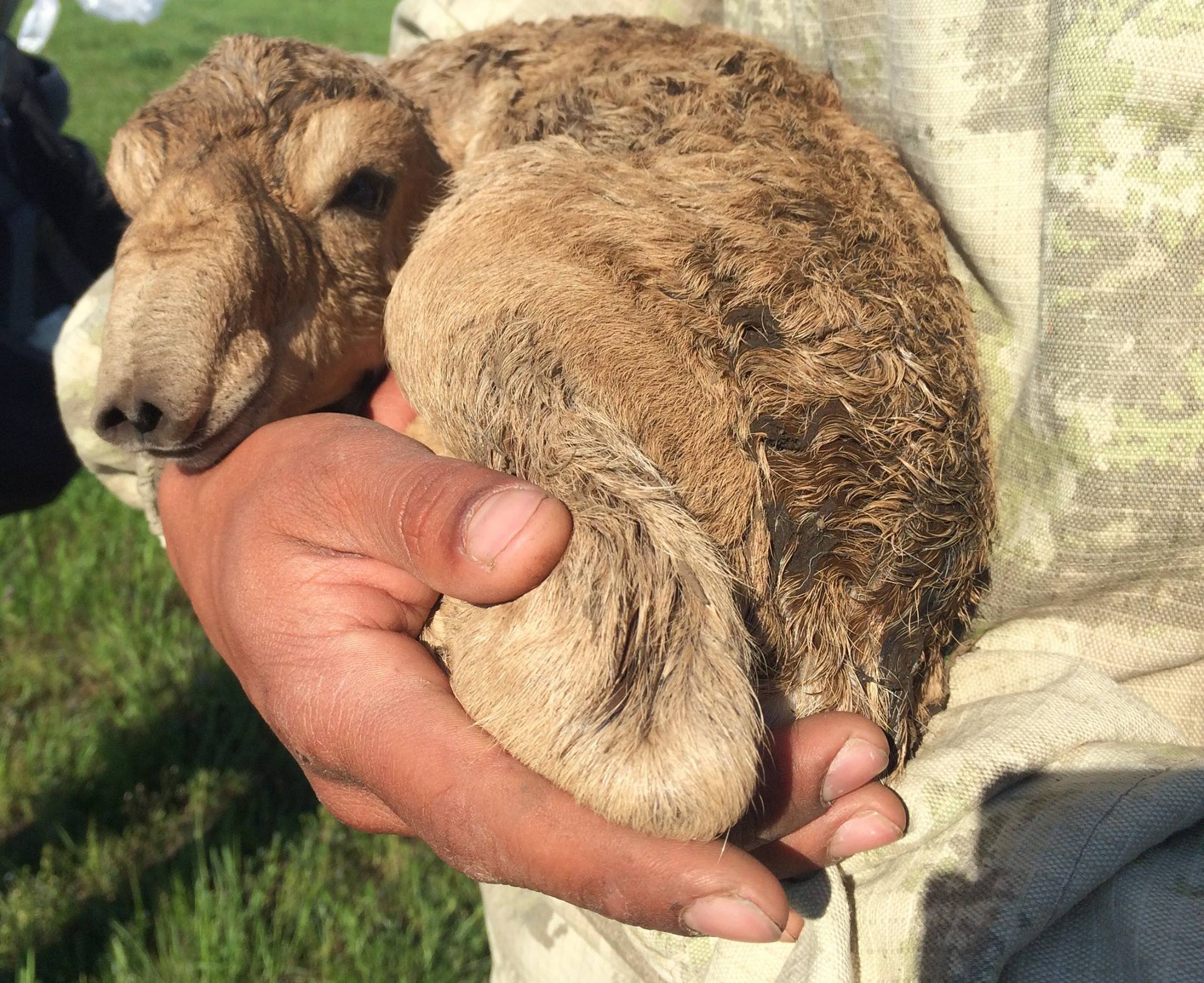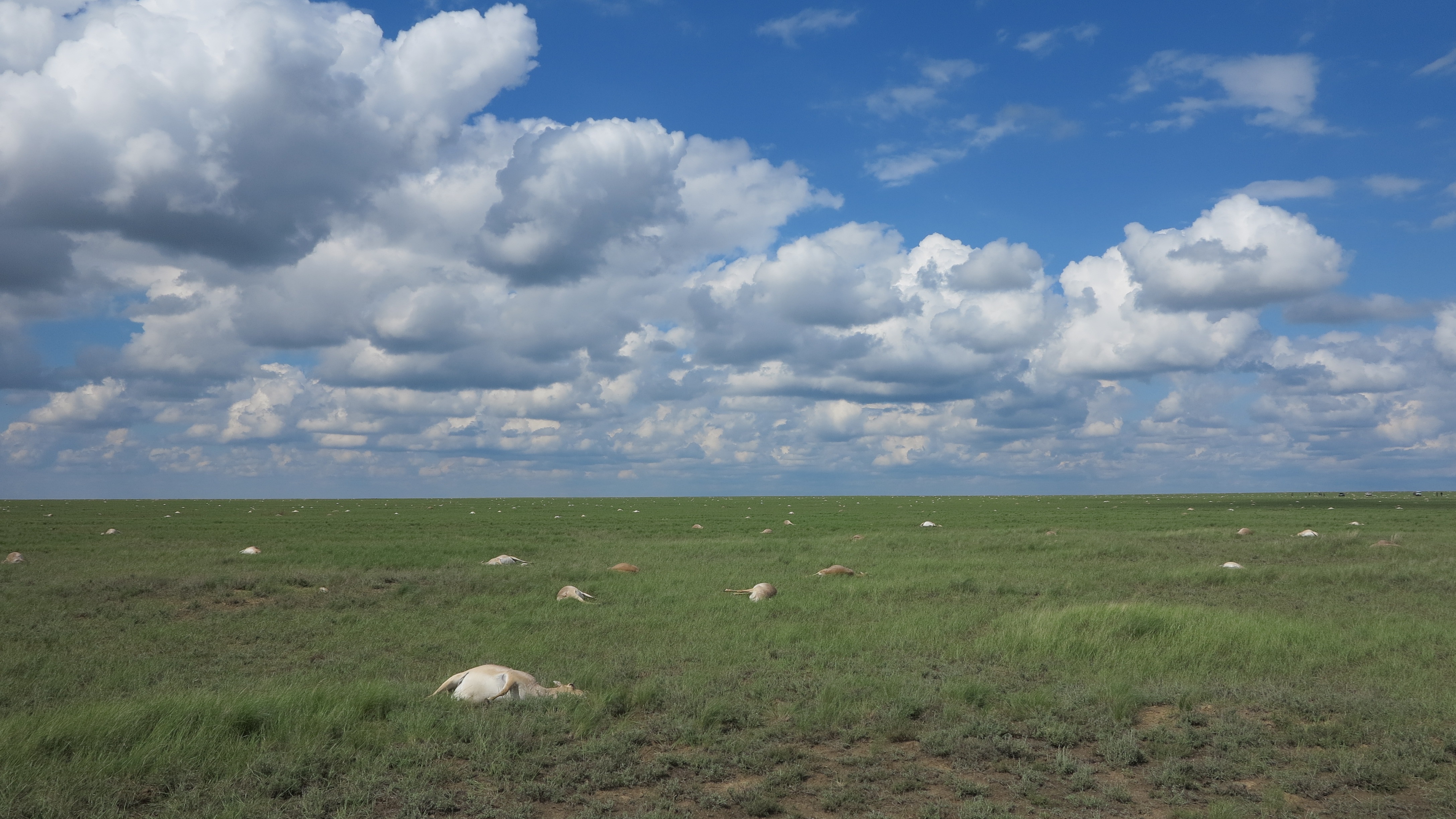Cause of mysterious mass death of saiga antelopes uncovered

Scientists have discovered that the sudden death of over 200,000 saiga antelopes in 2015 was likely due to environmental factors that triggered a deadly bacterium.
These critically endangered antelopes live in the remote steppe grassland of Central Asia. The deaths amounted to over 60 percent of the global population of the species. A paper in Science Advances describes how the healthy animals died of blood poisoning caused by the Pasteurella multocida bacterium. The mass deaths occurred while they were calving.
“Saiga gather en masse every spring to deliver their calves within a short period of time,” said Wendy Beauvais, a postdoctoral researcher in the Ivanek Lab at the College of Veterinary Medicine and co-author of the paper. “During that time, they are susceptible to disease, and since they are gathered together so closely, the whole population becomes vulnerable.”
The pathogen was likely living in the antelopes’ tonsils without causing harm to the animals until increased humidity and raised air temperatures triggered an opportunistic invasion of their blood stream by the bacterium, according to the paper.
This species has seen a handful of mass mortality events in the last fifty years, from two in the 1980s to this incident in 2015. The paper calls the occurrence unprecedented among other large mammal species. A sub-species of this antelope in Mongolia suffered similar losses in 2017 after a virus infection spilled into their herd from livestock.

The saiga antelope has been critically endangered since 2002. They are known for their long migrations and how they give birth to the largest calves in proportion to their size of any ungulate species. In addition to natural dangers like wolves and extreme temperatures, manmade threats like poaching and infrastructure development have depleted herds in Kazakhstan and Russia.
“They were already considered critically endangered before this event,” said Beauvais. “Although the outlook is worrying, they are capable of repopulating quickly and it’s possible their previous levels could be restored relatively soon.”
Local groups like the Association for the Conservation of Biodiversity of Kazakhstan have propelled ongoing efforts to catch and prosecute poachers, monitor the remaining populations and educate local citizens about the saiga antelopes and their conservation needs.
“We are working toward gathering enough information to predict and prevent these occurrences,” said Beauvais. “Our research team has already contributed to guidelines for such investigations, and now we will review them and hopefully improve them further.”
The paper is titled, “Saigas on the brink: multi-disciplinary analysis of the factors influencing mass mortality events.”
By Melanie Greaver Cordova




